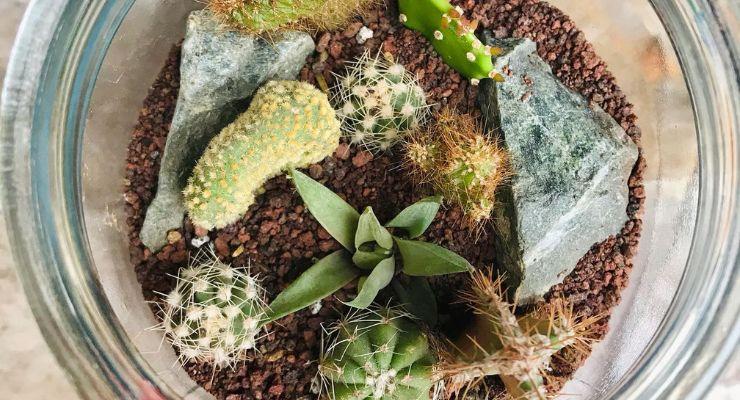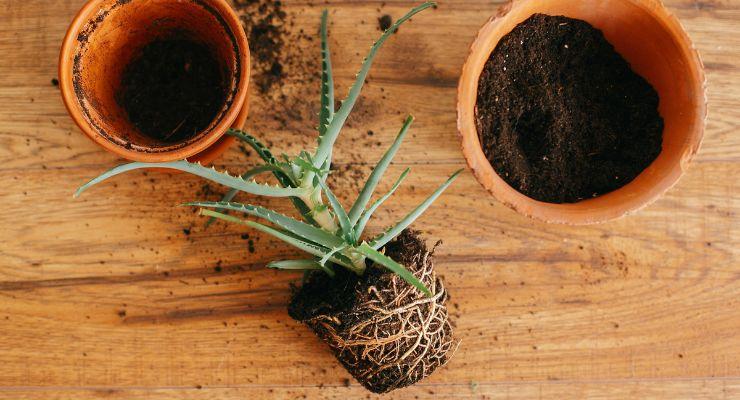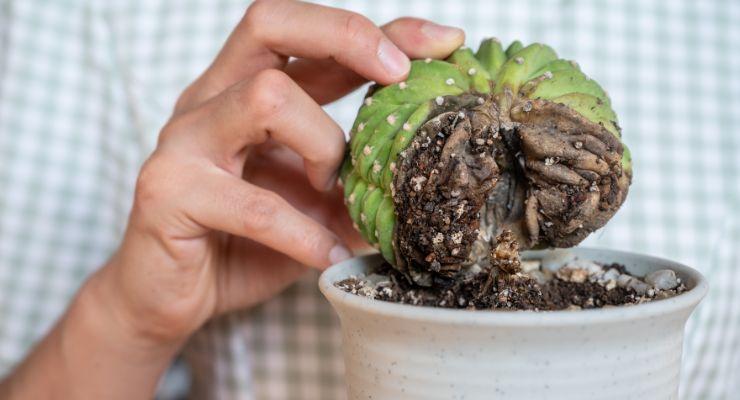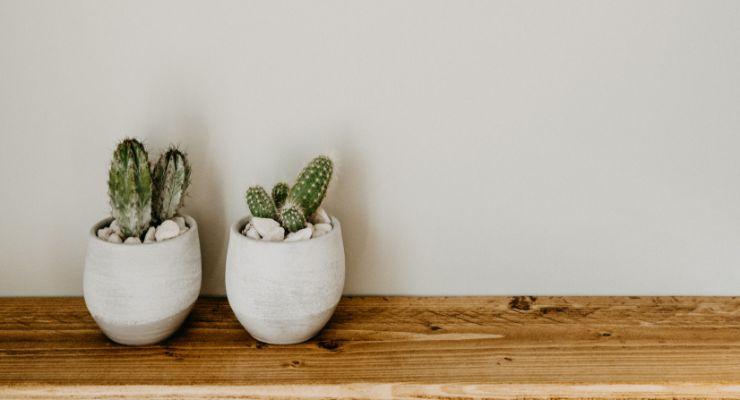A squishy cactus is a cactus that has become soft and mushy to the touch, a condition that is often caused by a variety of factors.
This can indicate serious problems for the health of the cactus, such as root rot, over-watering, or fungal disease. If a cactus is squishy, it is important to take action to address the underlying cause, to prevent further damage.
Common Reasons Why a Cactus Is Turning Squishy
Overwatering
Overwatering is a common cause of squishy cacti, as excess water can lead to root rot. It can occur when the soil remains damp for extended periods, or when too much water is added to the soil, without proper drainage.
If a cactus plant is overwatered, it is important to address the issue promptly to prevent further damage.
Root Rot
This is a serious condition that can occur in cacti when their roots have become waterlogged, leading to the growth of harmful fungi.
This can result in the death of the cactus plant, if not addressed promptly. Symptoms of a rotting cactus include yellowing leaves, mushy or discolored roots, and a foul smell.
Poor Drainage
Poor drainage can also lead to squishy cacti, as the excess water in the soil can lead to rotting.
This can occur when the soil mix used for growing cacti does not provide adequate drainage, or when the pot used to grow the cactus does not have adequate holes in the bottom to allow excess water to escape.
Humidity
High humidity levels can also contribute to squishy cacti, as the moist air can promote the growth of harmful fungi and bacteria.
This can be especially problematic for cacti grown in areas with high levels of rainfall or high humidity, or in greenhouses or indoor environments with poor air circulation.

Injury
Injury to the cactus can also lead to squishy spots, as this can make it vulnerable to infection. This may occur if the cactus has been damaged by pests, or injured in some other way, such as from a fall or from another type of impact.
It is important to take steps to address any underlying causes of injury, in order to prevent further damage.
Prevention and Treatment
The best way to take action when a cactus is squishy is to identify the underlying cause and address it promptly. There is a chance to save a rotting cactus when discovered early.
Depending on the cause, this may involve improving drainage, reducing the watering frequency, or reducing humidity levels.
Proper Watering Techniques
Watering is a crucial aspect of cactus care, and it’s essential to avoid an overwatered cactus, which is the leading cause of squishy cacti.
Make sure to water your cactus only when the soil is dry to the touch, and never let it sit in standing water.
It’s also important to use well-draining soil that allows excess water to escape, preventing rotting and waterlogging.
Importance of Drainage
Adequate drainage is critical in preventing squishy cacti. Ensure that your cactus plant pot has drainage holes at the bottom to allow excess water to escape, and use a potting mix specifically designed for cacti and succulents, which have excellent drainage properties.
It’s probably a good idea to elevate the pot on pot feet or stones to improve air circulation and prevent waterlogging.
Regular Inspection for Pests and Diseases
Routinely inspecting your cactus for signs of pests or diseases can help prevent them from causing significant damage.
Keep an eye out for insect infestations, fungal growth, or any unusual discoloration, and take action immediately if you spot any issues.
Regular inspections will also help you catch problems early, making them easier to treat and preventing the spread of disease.
Fungicide Treatment for Root Rot
This is caused by overwatering or poor drainage and can be treated with a fungicide. Make sure to follow the fungicide’s instructions carefully and avoid using it on healthy parts of the plant.
If the rot has progressed too far, you may need to remove the affected parts of the cactus and allow it to dry out before repotting it in fresh soil.
Repotting the Cactus
Repotting your cactus into fresh, well-draining soil can help prevent squishy cacti. A mushy cactus plant may be saved, so remove any affected parts and allow it to dry out before repotting.
Make sure to select a pot that’s the appropriate size for your cactus and provides adequate drainage. It’s also important to avoid overfilling the pot, as this can lead to waterlogging and rotting.

Neem Oil
Neem oil can help prevent issues such as insect infestations, fungal diseases, and root rot. It’s also effective in treating existing problems. Make sure to follow the neem oil directions carefully and apply it regularly as a preventive measure.
Frequently Asked Questions
Why Is my cactus squishy at the bottom?
The bottom of a cactus can become squishy due to several reasons. The most common cause is root rot caused by overwatering or poor drainage.
When the cactus roots are constantly sitting in water, they will start to rot and become mushy.
Another common cause of a squishy bottom is fungal and bacterial diseases. These diseases can weaken the plant and make it more susceptible to pests.
It’s important to regularly inspect your cactus for pests and diseases and treat them promptly. In some cases, pests can cause enough damage to the roots of a cactus that it will become squishy.
Can a squishy cactus be saved?
In many cases, a squishy cactus can be saved if the cause of the problem is identified and corrected in a timely manner.
Why Is my cactus rotting top down?
The top-down rotting of a cactus is a common issue that can occur for a variety of reasons, but an open wound or damage to the plant can significantly increase the risk of going squishy.
When a cactus has an open wound or damage, it creates a path for pathogens and bacteria to penetrate the plant, leading to a rapid spread of rot. Additionally, open wounds and damages can result in improper water flow, leading to a buildup of moisture within the cactus, which can trigger rotting.
To prevent top-down rotting in cacti with open wounds or damage, it is crucial to keep the affected area clean and dry.
Wounds should be covered with a wound dressing, and damaged parts of the cactus should be trimmed to prevent further damage.
Moreover, it is important to maintain proper watering techniques and to make sure that the soil is well-drained to prevent moisture buildup.
Finally, regular inspections for pests and diseases should be conducted, and fungicide treatments can be applied if necessary.

What is the ideal humidity level for a cactus?
The ideal humidity level for a cactus is between 20-30%. High humidity levels can cause fungal growth, which can lead to rotting and other issues for cacti.
It’s important to maintain low humidity levels for cacti to thrive.
How do I know if pests are causing the squishiness of my cactus?
You can check for pests causing the squishiness of your cactus by looking for signs of infestation such as visible insects or webs on the cactus, holes in the leaves or stem, sticky substances on the surface, or wilted or yellowing leaves.
You can also examine the soil for evidence of pests, such as eggs or larvae. If you suspect pests are the cause of the squishiness, it is important to take prompt action to prevent further damage to the plant.
You can consult with a local nursery or horticulturist for advice on the best course of treatment.
Conclusion
Taking care of cactus plants isn’t always easy, but with dedication and some knowledge it can be done. If you notice your cactus becoming squishy at the bottom or rotting from the top down, take action immediately to avoid further damage.
Make sure your potted plants have well-draining soil and are elevated on pot feet to improve air circulation. This is key for healthy roots and therefore, for the entire plant.
Regularly inspect for pests and diseases so that they don’t spread throughout the plant. And if root rot is present, use fungicide treatment to save a rotting cactus before it’s too late. With these tips in mind, you’ll soon find yourself with healthy cactus plants!

